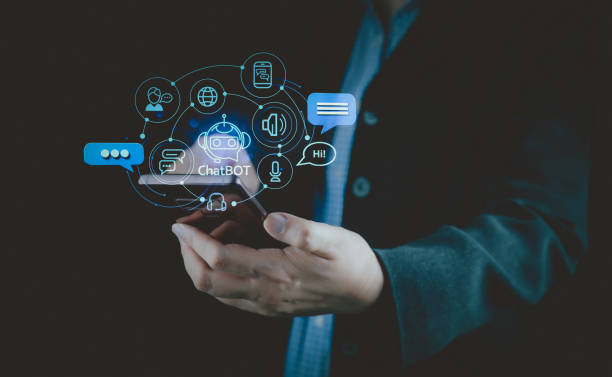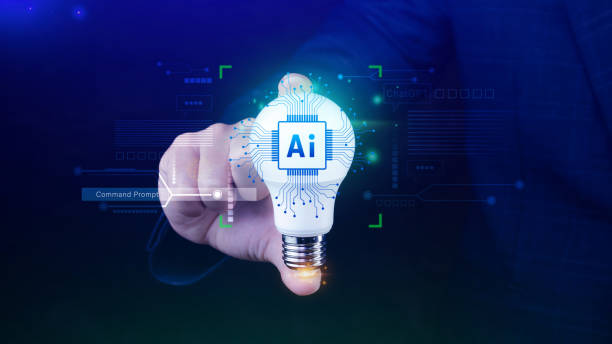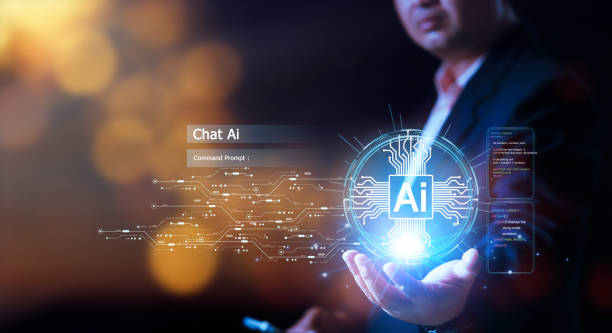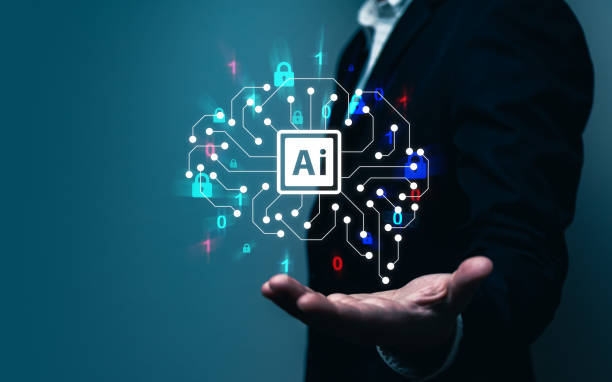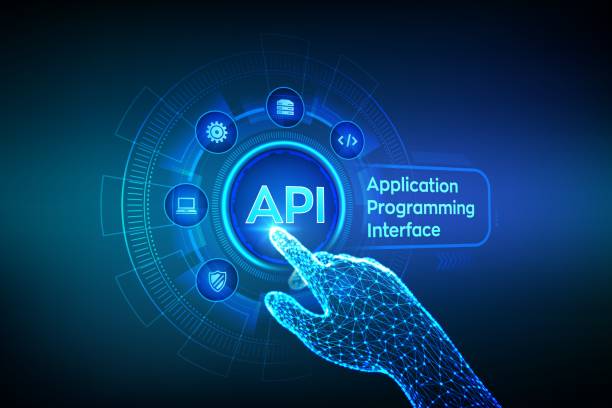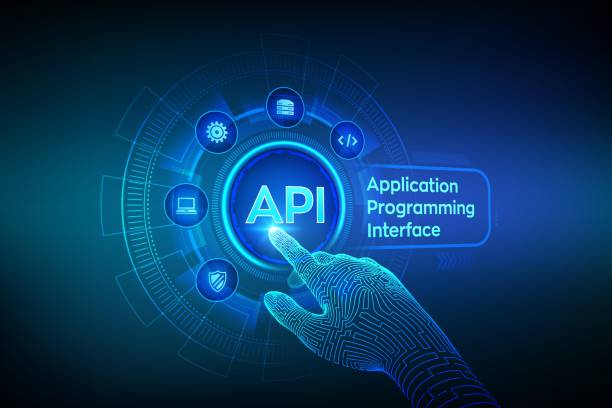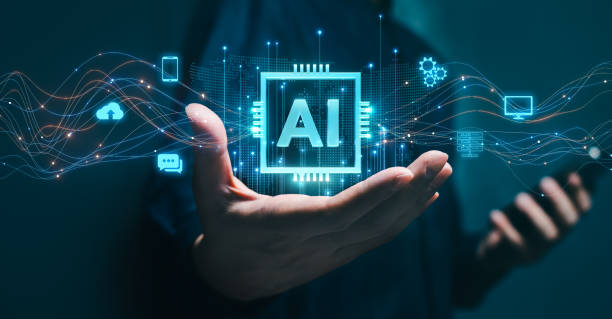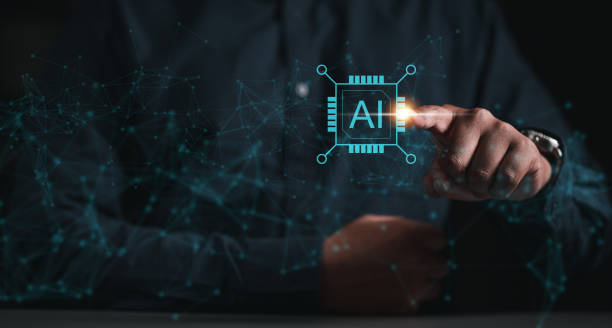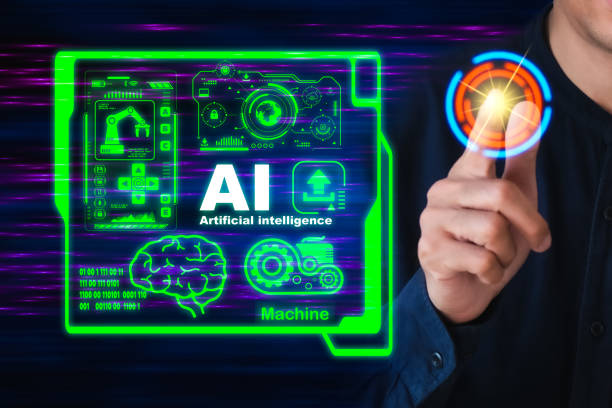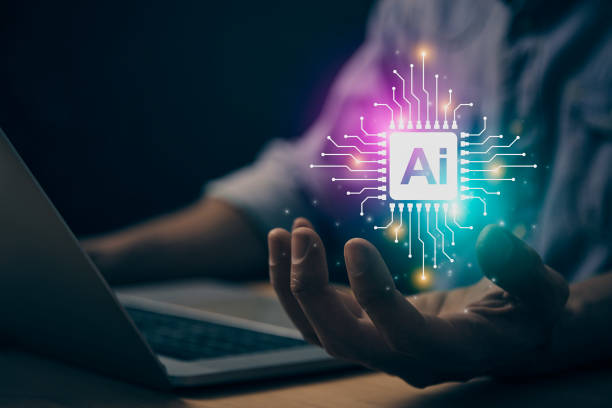What is an Artificial Intelligence Robot and How Does it Work?
#Artificial Intelligence Robot is a combination of two key concepts: robotics and artificial intelligence.
Robotics deals with the design, construction, operation, and application of robots.
Robots are typically mechanical devices capable of performing tasks automatically or semi-automatically.
Artificial intelligence is a branch of computer science that deals with creating systems capable of performing tasks that typically require human intelligence.
These tasks include learning, reasoning, problem-solving, natural language understanding, and pattern recognition.
An artificial intelligence robot is essentially a robot that, using artificial intelligence algorithms, is capable of performing more complex and intelligent tasks than ordinary robots.
These robots can learn from their environment, make decisions, and adapt to different conditions.
To better understand how an artificial intelligence robot works, it can be divided into three main parts: sensors, processors, and actuators.
Sensors collect information from the environment.
This information can include images, sounds, temperature, pressure, and other sensory data.
Processors, using artificial intelligence algorithms, analyze and interpret the collected information and make the necessary decisions.
Actuators execute the processors’ commands and move the robot or perform other tasks.
Therefore, an artificial intelligence robot, by combining these three parts, is capable of performing complex and intelligent tasks.
Did you know that customers’ first impression of your company is your website? With a powerful corporate website from Rasaweb, multiply the credibility of your business!
✅ Exclusive and eye-catching design tailored to your brand
✅ Improved user experience and increased customer attraction
⚡ Get free consultation!
Types of Artificial Intelligence Robots and Their Applications
Artificial intelligence robots are designed and built in various types, each suitable for specific applications.
One of the common classifications is based on the type of task the robot performs.
For example, industrial robots are used to perform repetitive and precise tasks in production lines.
These robots typically have mechanical arms that are capable of performing complex and precise movements.
Service robots are designed to provide services to humans.
These robots can be used in hospitals for moving drugs and equipment, in hotels for providing services to guests, and in homes for performing daily tasks.
Military robots are used to perform dangerous and difficult tasks on the battlefield.
These robots can be used for identifying and neutralizing mines, carrying equipment and weapons, and performing reconnaissance operations.
Space robots are used for exploring and examining planets and other celestial bodies.
These robots typically have complex systems for movement and navigation in space and are capable of collecting and transmitting information to Earth.
In addition, artificial intelligence robots have extensive applications in other fields such as healthcare, education, agriculture, and transportation.
For example, in healthcare, robots can be used for performing precise surgeries, assisting in patient rehabilitation, and providing healthcare in homes.
In education, robots can act as private tutors and teaching assistants, helping students learn various concepts.
In agriculture, robots can be used for planting, cultivating, and harvesting crops, helping to increase productivity and reduce costs.
In transportation, robots can be used for autonomous driving of vehicles, transporting goods and passengers, and managing traffic.
Click here to preview your posts with PRO themes ››
Advantages and Disadvantages of Using Artificial Intelligence Robots
The use of artificial intelligence robots has numerous advantages and disadvantages that should be carefully considered.
One of the most important advantages of using artificial intelligence robots is increased productivity and reduced costs.
Robots can perform tasks around the clock without needing rest, thereby significantly increasing productivity.
Also, robots can perform dangerous and difficult tasks, thus preventing harm to human labor.
In addition, robots can perform tasks with greater accuracy and speed than humans, thereby improving the quality of products and services.
However, the use of artificial intelligence robots also has disadvantages.
One of the most significant disadvantages is the loss of human jobs.
With robots replacing humans in many industries, a large number of people may lose their jobs.
Also, the use of artificial intelligence robots can lead to increased economic inequality, as the profit from increased productivity is unequally distributed between capital owners and workers.
In addition, the use of artificial intelligence robots can raise new ethical issues.
For example, who is responsible for the decisions made by robots? How can the misuse of robots be prevented? These issues require careful consideration and the development of appropriate laws and regulations.
Despite these disadvantages, it seems that the use of artificial intelligence robots is inevitable in the future.
With advances in technology and reduced costs of construction and maintenance of robots, their use will expand in various industries.
Therefore, it is essential that governments, companies, and individuals prepare to face these changes and adopt appropriate policies and strategies.
| Advantages | Disadvantages |
|---|---|
| Increased Productivity | Job Loss |
| Reduced Costs | Increased Economic Inequality |
| Greater Accuracy and Speed | Ethical Issues |
Challenges in Developing Artificial Intelligence Robots
The development of artificial intelligence robots faces numerous challenges that require extensive efforts in various fields.
One of the most important challenges is the development of more advanced artificial intelligence algorithms.
Current artificial intelligence algorithms perform well in many areas, but still need improvement in some areas such as natural language understanding, reasoning, and problem-solving.
To develop more advanced algorithms, more research is needed in various fields of artificial intelligence such as deep learning, neural networks, and evolutionary algorithms.
Another challenge is collecting enough high-quality data to train artificial intelligence algorithms.
Artificial intelligence algorithms need a lot of data to learn and improve their performance.
This data must be high-quality and relevant to the task that the robot must perform.
Collecting enough high-quality data can be a major challenge, especially in areas where little data is available.
Another challenge is developing suitable hardware for artificial intelligence robots.
Artificial intelligence robots need powerful hardware to process data and execute artificial intelligence algorithms.
This hardware must be energy-efficient, lightweight, and durable.
Developing suitable hardware for artificial intelligence robots is a major challenge, especially in areas where small and lightweight robots are needed.
In addition, ethical and legal issues are also important challenges in the development of artificial intelligence robots.
How can the misuse of robots be prevented? Who is responsible for the decisions made by robots? How can discrimination in artificial intelligence algorithms be prevented? These issues require careful consideration and the development of appropriate laws and regulations.
To overcome these challenges, cooperation between researchers, engineers, policymakers, and the general public is needed.
With joint efforts, artificial intelligence robots can be developed in a way that benefits society and helps solve global problems.
Is your current online store design not delivering the sales you expect?
Rasaweb specializes in professional online store design!
✅ An attractive and user-friendly site aimed at increasing sales
✅ High speed and security for an ideal shopping experience⚡ Get a free online store design consultation with Rasaweb!
The Future of Artificial Intelligence Robots
The future of artificial intelligence robots is very bright and full of new opportunities.
With advances in technology and reduced costs of construction and maintenance of robots, their use will expand in various industries.
Artificial intelligence robots are taking automation to new levels and helping to increase productivity, reduce costs, and improve the quality of products and services.
One of the most important future trends is the development of collaborative robots (Cobots).
These robots are designed to work alongside humans and can assist them in performing various tasks.
Collaborative robots can be used in production lines, hospitals, offices, and homes, helping to increase safety and efficiency.
Another trend is the development of self-driving robots.
These robots are capable of moving and navigating in complex environments without the need for human control.
Self-driving robots can be used in transportation, logistics, agriculture, and exploration, helping to reduce costs and improve efficiency.
In addition, artificial intelligence robots will play a more important role in healthcare.
Robots can be used for performing precise surgeries, assisting in patient rehabilitation, providing healthcare in homes, and developing new drugs and treatments.
Artificial intelligence robots will also play an important role in education.
Robots can act as private tutors and teaching assistants, helping students learn various concepts.
However, the development of artificial intelligence robots requires attention to ethical and social issues.
It must be ensured that robots benefit society and help solve global problems.
Also, the misuse of robots must be prevented, and the rights and privacy of individuals must be protected.
Ethical Considerations in the Design and Use of Artificial Intelligence Robots
The design and use of artificial intelligence robots come with serious ethical considerations that require attention and careful consideration.
One of the most important ethical considerations is the issue of responsibility.
If an artificial intelligence robot makes a mistake or causes damage, who is responsible? Is responsibility with the designer, manufacturer, user, or the robot itself? This issue requires the development of appropriate laws and regulations that clearly define responsibility.
Another issue is the issue of privacy.
Artificial intelligence robots can collect a lot of information about people, including personal information, habits, and behaviors.
How can the misuse of this information be prevented? How can the rights and privacy of individuals be protected? This issue requires the development of appropriate laws and regulations that limit the collection, use, and storage of information by robots.
Another issue is the issue of discrimination.
Artificial intelligence algorithms may be built on biased training data and make discriminatory decisions.
For example, a hiring algorithm may unfairly favor one gender or race.
How can discrimination in artificial intelligence algorithms be prevented? How can it be ensured that robots treat all people fairly and equally? This issue requires careful review of training data and algorithms, and also requires the development of appropriate laws and regulations that prohibit discrimination.
In addition, the issue of security is also an important ethical consideration.
Artificial intelligence robots may be subject to cyber attacks and their control may be taken over by hackers.
How can the security of robots be protected? How can the misuse of robots for malicious purposes be prevented? This issue requires the development of strong security systems and the development of appropriate laws and regulations that prohibit the use of robots for malicious purposes.
Impact of Artificial Intelligence Robots on the Economy and Labor Market
Artificial intelligence robots have a profound impact on the economy and labor market, and this impact will increase in the future.
One of the most important impacts is increased productivity and reduced costs.
Robots can perform tasks around the clock without needing rest, thereby significantly increasing productivity.
Also, robots can perform dangerous and difficult tasks, thus preventing harm to human labor.
In addition, robots can perform tasks with greater accuracy and speed than humans, thereby improving the quality of products and services.
This increase in productivity and reduction in costs can lead to economic growth and increased profitability for companies.
However, the use of artificial intelligence robots can also lead to the loss of human jobs.
With robots replacing humans in many industries, a large number of people may lose their jobs.
This issue requires serious attention, and governments and companies must plan for the training and retraining of the workforce so that people can learn new skills and engage in new jobs.
The use of artificial intelligence robots can also lead to changes in the structure of the labor market.
Jobs that require repetitive and simple skills are more at risk of being lost, while jobs that require creative, problem-solving, and communication skills will be more in demand.
Therefore, people must be prepared to learn new skills and adapt to changes in the labor market.
In addition, the use of artificial intelligence robots can lead to increased economic inequality, as the profit from increased productivity is unequally distributed between capital owners and workers.
Governments must adopt policies that prevent increased economic inequality and distribute the benefits of using artificial intelligence robots more fairly among all members of society.
| Positive Impacts | Negative Impacts |
|---|---|
| Increased Productivity | Job Loss |
| Reduced Costs | Increased Economic Inequality |
| Improved Quality of Products and Services | Changes in the Labor Market Structure |
Artificial Intelligence Robots in Iran: Current Status and Outlook
In Iran, the field of artificial intelligence robots is developing, and efforts are being made to localize this technology.
Various universities and research centers in Iran are active in the field of robotics and artificial intelligence and have carried out numerous projects in this field.
However, the development of artificial intelligence robots in Iran faces challenges.
One of the most important challenges is the lack of investment in this field.
The development of artificial intelligence robots requires large investments in research and development, workforce training, and the creation of appropriate infrastructure.
Another challenge is the shortage of specialized labor in this field.
The development of artificial intelligence robots requires specialists in various fields such as robotics, artificial intelligence, computer science, and electrical engineering.
The government should plan for the training and education of specialized labor in this field.
Another challenge is the lack of appropriate laws and regulations in this field.
The development of artificial intelligence robots requires laws and regulations that define the rights and responsibilities of designers, manufacturers, users, and robots.
The government should take action to develop appropriate laws and regulations in this field.
Despite these challenges, the outlook for the development of artificial intelligence robots in Iran is bright.
Given the existing potential in the country, with proper planning and investment in this field, Iran can become one of the leading countries in the field of artificial intelligence robots.
The government should support knowledge-based companies and startups active in this field and provide conditions for their growth and development.
Also, the government should, in cooperation with universities and research centers, provide the ground for the transfer of knowledge and technology into the country.
With joint efforts, artificial intelligence robots can be developed in Iran in a way that benefits society and helps solve the country’s problems.
Are you worried about losing customers who don’t have a professional online store?
Forget these worries with online store design by Rasaweb!
✅ Significant increase in sales and conversion rate of visitors to customers
✅ Professional and user-friendly design that builds customer trust
⚡ Get a free consultation from Rasaweb
How to Build an Artificial Intelligence Robot: A Step-by-Step Guide
Building an #artificial intelligence robot can be a challenging but very rewarding project.
This process requires knowledge in various fields including robotics, artificial intelligence, programming, and electronics.
Here is a step-by-step guide to building an artificial intelligence robot: Step One: Define the Goal.
Before you start building the robot, you need to define your goal.
What is your robot going to do? Do you want to build a service robot, an industrial robot, or an educational robot? Defining the goal will help you choose the right parts and software.
Step Two: Choose Hardware Components.
Hardware components include the robot’s body, motors, sensors, controllers, and power supply.
The robot’s body should be durable and lightweight.
The motors should have enough power to move the robot.
The sensors should be able to collect information from the environment.
The controllers should be able to process information and control the robot.
The power supply should provide enough energy to meet the robot’s needs.
Step Three: Design and Build the Robot’s Body.
The robot’s body can be made of various materials such as plastic, metal, or wood.
The design of the robot’s body should be such that the hardware components fit easily into it and the robot can move easily.
Step Four: Select and Install Sensors.
Sensors collect information from the environment.
There are different types of sensors, including touch sensors, optical sensors, sound sensors, and thermal sensors.
You should choose the appropriate sensors according to the purpose of your robot and install them correctly.
Step Five: Select and Install the Controller.
The controller is the brain of the robot and is responsible for processing information and controlling the robot.
There are different types of controllers, including Arduino, Raspberry Pi, and microcontrollers.
You should choose the appropriate controller according to the complexity of your robot and install it correctly.
Step Six: Program the Robot.
Programming the robot involves writing code that tells the robot what to do.
You can use various programming languages such as Python, C++, or Java to program the robot.
Step Seven: Train Artificial Intelligence Algorithms to the Robot.
For your robot to perform intelligent tasks, you need to train artificial intelligence algorithms to it.
You can use machine learning algorithms, neural networks, and evolutionary algorithms to train the robot.
Step Eight: Test and Optimize the Robot.
After completing the construction and programming of the robot, you should test it and check its performance.
If the robot is not working properly, you should optimize it and fix the problems.
Key Concepts in Artificial Intelligence Needed to Build a Robot
To build an #artificial_intelligence_robot, familiarity with key concepts in artificial intelligence is essential.
These concepts will help you choose the right algorithms, program your robot, and optimize its performance.
Machine Learning is a branch of artificial intelligence that allows systems to learn from data without explicit programming.
There are different types of machine learning algorithms, including supervised learning, unsupervised learning, and reinforcement learning.
Neural Networks are computational models inspired by the structure of the human brain.
Neural networks consist of multiple layers of nodes (neurons) that are interconnected.
Neural networks are used to perform various tasks such as image recognition, speech recognition, and natural language processing.
Natural Language Processing is a branch of artificial intelligence that allows systems to understand and generate human language.
Natural language processing is used to perform various tasks such as machine translation, text summarization, and answering questions.
Computer Vision is a branch of artificial intelligence that allows systems to understand and analyze images.
Computer vision is used to perform various tasks such as face recognition, object recognition, and motion tracking.
Artificial intelligence robots Robotics is a branch of engineering that deals with the design, construction, operation, and application of robots.
Robots are mechanical devices capable of performing tasks automatically or semi-automatically.
To build an artificial intelligence robot, you need to be familiar with key concepts in robotics such as kinematics, dynamics, and control.
Search Algorithms are algorithms used to find a solution to a problem.
There are different types of search algorithms, including depth-first search, breadth-first search, and A* search.
Planning Algorithms are algorithms used to plan the actions of a robot.
There are different types of planning algorithms, including hierarchical planning and example-based planning.
Familiarity with these key concepts will help you build more advanced artificial intelligence robots that are capable of performing complex and intelligent tasks.
Frequently Asked Questions
| Question | Answer |
|---|---|
| What is an artificial intelligence robot? | It is a robot that uses the capabilities of artificial intelligence to understand the environment, reason, learn, and make decisions in order to perform complex tasks independently. |
| What is the main difference between a regular robot and an artificial intelligence robot? | Artificial intelligence robots can learn and adapt to their environment, while regular robots usually operate based on fixed and predetermined plans. |
| In what areas are artificial intelligence robots used? | In areas such as industry (production lines), medicine (robotic surgeries), services (customer support, smart vacuum cleaners), exploration (space and underwater), and entertainment. |
| How do artificial intelligence robots learn? | They acquire new skills through machine learning (Machine Learning) and deep learning (Deep Learning) algorithms, by analyzing large data and identifying patterns. |
| Can artificial intelligence robots have emotions? | Currently, no. They can identify or simulate emotions, but they do not have a real experience of emotions like humans. |
| What are the most important advantages of using artificial intelligence robots? | Increased productivity, reduced human error, performing dangerous or repetitive tasks, and providing innovative and efficient services. |
| What challenges exist in the development of artificial intelligence robots? | The need for abundant and high-quality data, the complexity of algorithms, ethical issues, cybersecurity, and the high cost of research and development. |
| Are artificial intelligence robots dangerous to humans? | With the observance of safe design principles and ethical regulations, no. Concerns are more related to social and economic impacts such as changes in the labor market. |
| What is an example of an artificial intelligence robot in everyday life? | Smart vacuum cleaner robots (such as Roomba) that automatically map and clean the house, or smart voice assistants (such as Siri and Alexa). |
| How is the future of artificial intelligence robots predicted? | They are expected to become smarter, more autonomous, and capable of more complex interaction with humans, playing a more prominent role in industry, medicine, transportation, and everyday life. |
and other services of Rasa Web advertising agency in the field of advertising
Smart Content Strategy: A novel service to increase campaign management by optimizing key pages.
Smart Digital Advertising: A combination of creativity and technology to increase click-through rates by managing Google Ads.
Smart Digital Advertising: A creative platform to improve digital branding with precise audience targeting.
Smart SEO: A novel service to increase digital branding by customizing the user experience.
Smart Digital Branding: Transform campaign management with the help of key page optimization.
And more than hundreds of other services in the field of internet advertising, advertising consulting and organizational solutions
Internet Advertising | Advertising Strategy | Advertorial
Sources
What is a Smart Robot (AI Robots)?
,Artificial Intelligence and Robots
,What is Artificial Intelligence?
,Artificial Intelligence Robots; A Bright Future Awaits
? To boost your business in the digital world and reach more customers, Rasaweb Digital Marketing Agency is here to help with expertise in user-friendly website design and comprehensive online marketing solutions.
📍 Tehran, Mirdamad Street, next to Central Bank, Kazerun South Alley, Ramin Alley No. 6

